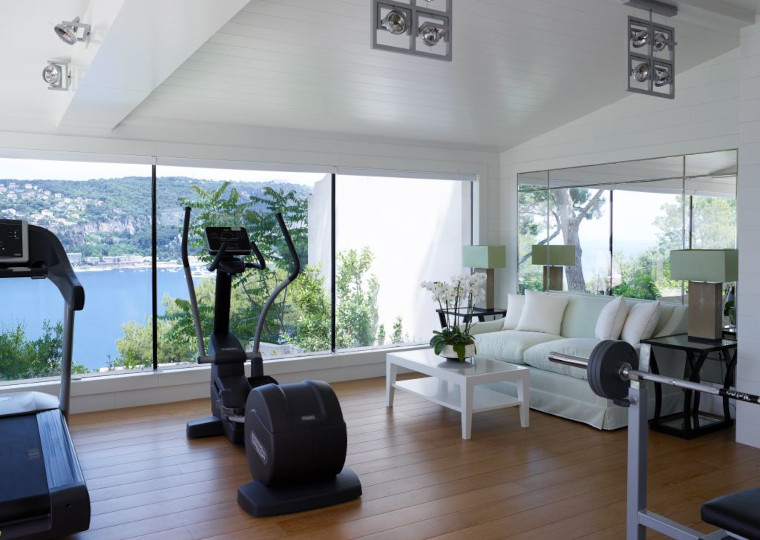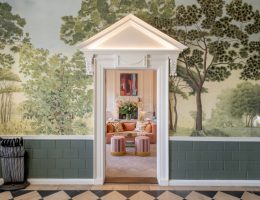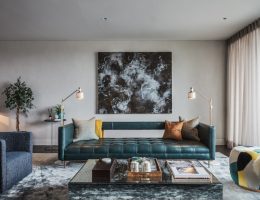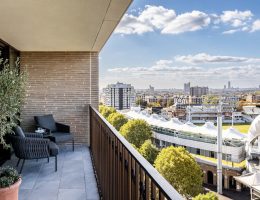It seems the pandemic has caused a surge in demand for exercise spaces within the home. I asked four professional interior designers, all BIID members, for their tips on creating the perfect home gym.
Marie-Noelle Swiderski at Galuchat Design says, “There has certainly been an increase in creating opportunities for me-time, wellbeing and exercise as we have all been forced to reassess our dwellings, their features and their shortcomings. From necessity, it has become very important to ensure our home offers versatility and flexibility and a self-contained answer to every aspect of our lifestyle. That includes dedicated, or potentially doubling up of, space as gym/exercise areas.”
Rik Smith at Design Emporium says, “The demand for gym space within larger properties has remained a constant over the years, but the greatest shift in the last year has seen much greater emphasis on gym space even in more modest properties. The demand for bedroom space and ensuring multiple guest/occasional rooms has significantly diminished with people focusing on their needs not those of infrequent visitors. I would expect when you visit friends or family in future you’ll be sharing your room with a Peloton.”
Henry Prideaux at Henry Prideaux Interior Design says, “Yes, we have certainly noticed a greater demand amongst our residential clients who want to prioritise a healthy lifestyle with the convenience of working out at home, using an online fitness app or joining a Zoom class rather than going to their regular gym or private health club. At a recently completed London project we designed a space within the basement specifically to house a home gym and Peleton cycling station, which has been particularly important to our client throughout the past year of lockdowns and restrictions.”
What are the ‘must haves’ in a home gym?
Marie-Noelle provides this check list for creating the perfect home gym:
- Excellent modular lighting: bright and energising for dynamic, aerobic, cardio and plyo activities. Dimmable or switchable to softer, warm light for stretching, yoga, pilates and dancing.
- Clear space: the possibility to fully stretch or jump without hitting something or yourself. Space to have equipment for a variety of exercises, as well as free space to lie down, dance, jump. Perhaps even a large mirror, to check movements and posture. In cases where the gym cannot be in a dedicated room, it is essential that the space can be cleared with options to put things away efficiently, unobtrusively and without too much effort.
- The right flooring: beyond removable yoga or exercise mats, it is ideal to have a fit-for-purpose sprung floor or a stable surface that offers some yield, to minimise impact and avoid injury. Therefore no concrete and ideally no carpet, as sweat and diverse particles will build up and gather bacteria. There is a wide variety of sustainable, recycled rubber-type or wood exercise floorings out there, with inherent features such as anti-bacterial and easy clean. If not in a dedicated room, it is worth investing, at the very least, in a high-quality, sturdy matt – durable, large enough and yet easily folded away.
With regard to equipment, Rik says the majority of people are looking for machines that will give them a cardio workout. “We find most of our clients are keen to have the opportunity to get their heart rate up without having to step into the cold or wet. The most popular of these being an exercise bike. They take up minimal space, are easy to move around the home and there is huge array of online classes.
However, everyone has realised over the last year how much you can exercise in a small space with limited or no equipment. This has led to a greater need for ‘free space’. Areas that can be multifunctional and allow a huge variety of workouts for the whole family – whether that is yoga with Adriene or a full body class with Joe Wicks.”
Henry says his solution, for creating the perfect home gym, is to incorporate different zones, “Including somewhere suitable for stretching and floor exercises, an area for using free weights, as well as allowing for bulky cardio equipment such as a treadmill, cross trainer and rowing machine. Flattering lighting and a decent audio-visual system are also great and having the facility to install a steam room or sauna then shower and change afterwards is an added luxury that we would aim to include.”
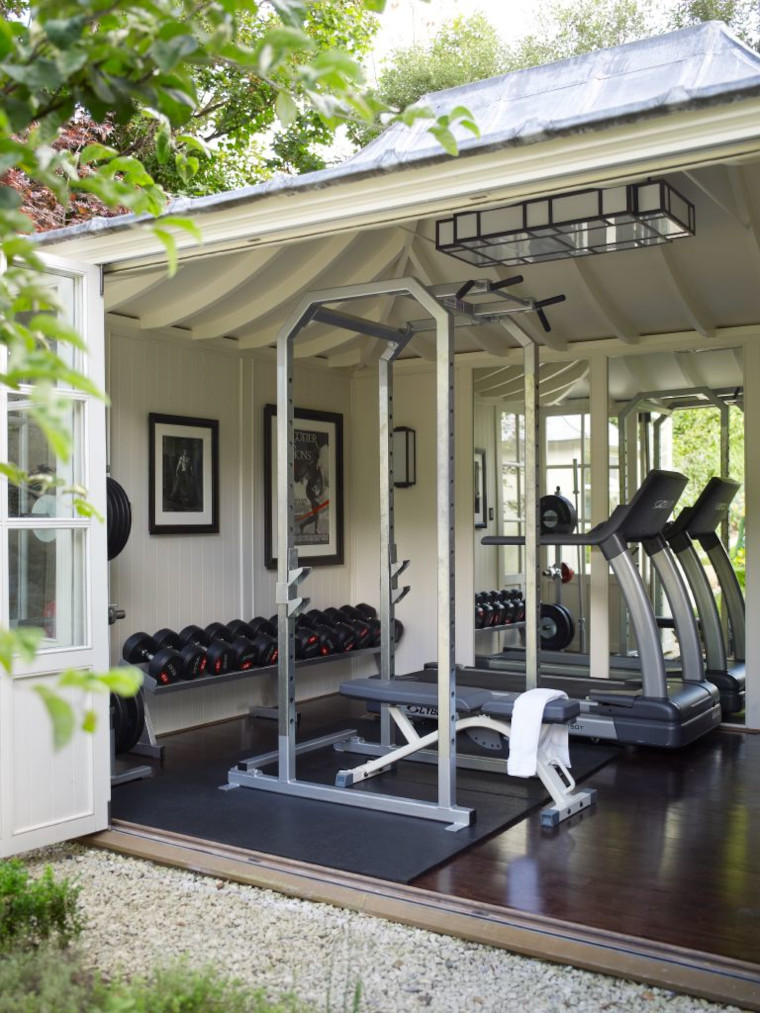
Is it important where the gym is located in the home?
Henry says yes, “A home gym should be a destination, either on a separate floor in the home away from everyday life or, even better, in a separate building or garden studio.”
Marie-Noelle agrees, “The gym should ideally be out of the way to allow for concentration and for the enjoyment of music without disturbing the rest of the household. If it can open onto an outdoor or relaxation space for that post-workout transition, even better. Access to a dedicated changing space close by is a definite bonus, if not a must, depending on your property.”
Philippa Thorp at Thorp Design says, “A gym is pretty much a mandatory item on our clients’ wish lists. We always prefer that a gym is located in an area with natural light supplemented with LED. Natural light and fresh air are always the very best for our welfare.”
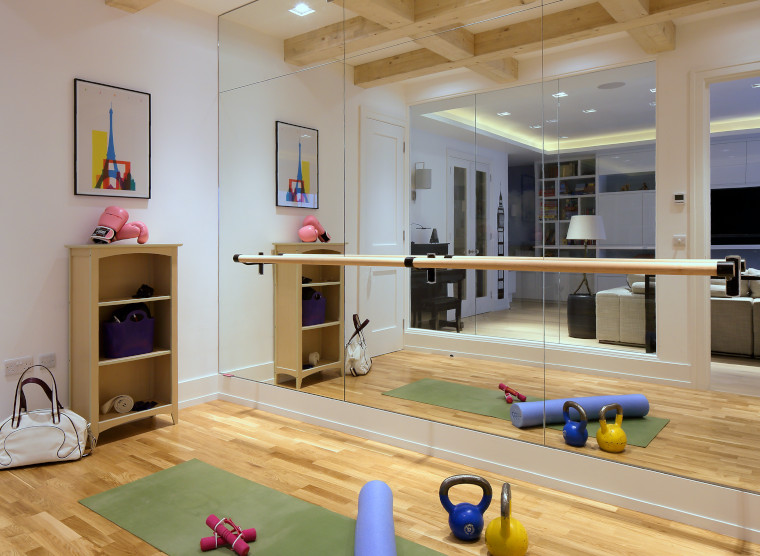
Is it possible to integrate a gym into the home even if there isn’t a dedicated room available?
Marie-Noelle says yes, as long as you stick to these principles:
- allocate approximately a 2m x 2m (x 2.4m height) area for full length lying down without being boxed in and free lateral movements. As well as safe jumping without risk of concussion.
- To transition this space into gym mode, agree ahead of time on a specific storage option that is easy to access and will make that shift, smooth every time.
- Choose the lighting options to suit the chosen activity as well as the room’s other functions.
- Change the flooring surface – even if it means rolling out a mat.
Henry agrees that storage is key, “You can store portable items such as weights and mats out of view, but you will get more use out of things that are readily available and conveniently accessed. I think it is wise to establish which type of workout is the priority or the piece of equipment likely to get the most use and design the space accordingly. There are some clever foldaway options on the market and adding a mirror to give the illusion of space is a popular trick used by designers.”
What do you need to consider in terms of lighting, ventilation, finishes etc?
Marie-Noelle says lighting dictates the mood and functionality of any space. “Allow for layered lighting so as to create on demand varied moods within one space. And, wherever possible, allow for some direct/active lighting as well as an indirect/mood option
Fresh air will always be preferable, when creating the perfect home gym, and the chosen room needs to be easily and regularly ventilated – nobody likes locker room smell.”
Henry agrees that ventilation is important “If creating a gym within a domestic environment, unless you are hosting larger gym sessions, a pair of bathroom fans should be adequate.
For flooring we would recommend a composite floor that is firm, with a bit of flex, and can be easily cleaned after a workout. Mirrored walls are always good to keep you motivated and check your posture as you exercise as well as creating a sense of space in a small area.
If you like to work-out to music, it might be an idea to add an acoustic layer to walls to sound-proof the space too.
You do need good overhead lighting, but I would also recommend some subtle strip lighting and dedicated task lighting on key pieces of equipment for focused training.”
Rik has this to add, “If you are creating a dedicated gym space it’s important to consider the type of workouts you will want to do. Cushioning to the floor in certain spaces will help individuals, but also dampen the sound transmission to other parts of the property.
The style of a dedicated gym can take inference from the rest of the house, you don’t just have to go dark and moody. Equipment often has an industrial aesthetic, but in the last few years many manufacturers have started to style their equipment like pieces of elegant furniture, using beautiful timbers or leathers.
Be considerate and realistic about the training you will do in the space. If you’re likely to be losing a bucket of water from your brow be conscious of the floor finishes and ease of cleaning. Tile, engineered timber or luxury vinyl tile are all extremely practical in a home gym.”
And Philippa adds, “Light and atmosphere in a gym is paramount for sustained good health. Keep the finishes clean, simple and bright.”
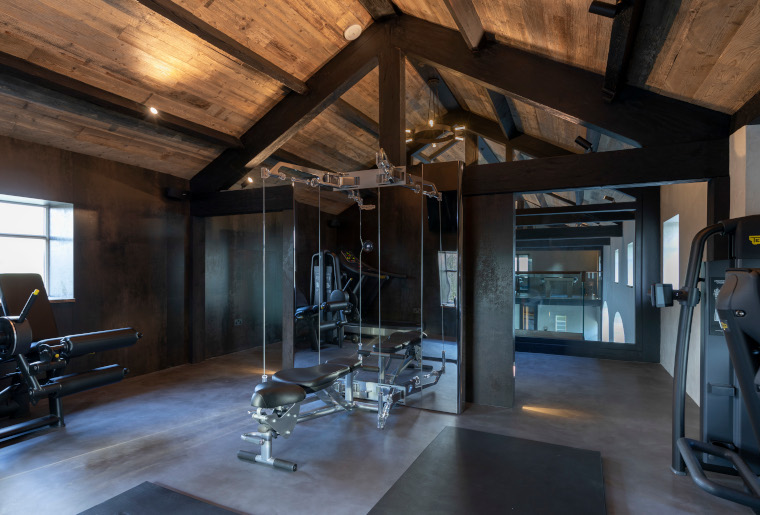
Where to find home gym equipment
Finally I asked the panel if there were any suppliers they could recommend who produce gym equipment that does the job but also looks good.
Marie-Noelle suggests the Luno Ball by Vivora, that comes in leather or felt. Hock Design’s dumbbells and push-up bars in sustainable wood and Italian leather. The Ubarre weighted bar by Equipt in 4 colour options – gold, white, charcoal, and black. And the striking Ciclotte Teckell exercise bike – the only one in the world made of crystal.
Both Philippa Thorp and Rik Smith say Technogym is a favourite for their clients. The company has always been one of the premium suppliers in the gym market and now produce a specific range dedicated to the home gym, with a softer and more adaptable aesthetic.
For elegance, Rik suggests NOHrd – “truly stunning pieces of kit that appear more sculptural in form.”
Henry recommends Gym Marine specialists in gym design and equipment supply.
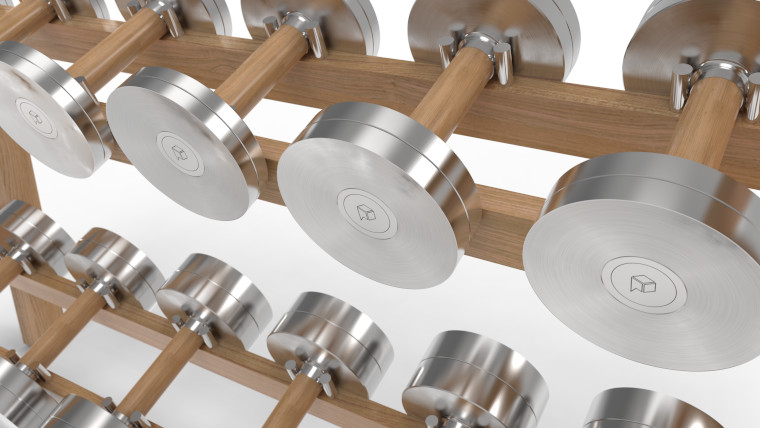
And finally my tip is Paragon Studio, who design and manufacture sustainably sourced gym equipment for residential and superyacht gyms. The company will work with interior designers to match materials and finishes to integrate the equipment with the rest of the scheme.
(If you enjoyed Creating the Perfect Home Gym, you may like What do Interior Designers Think About Room Fragrance? you cn read it here )
